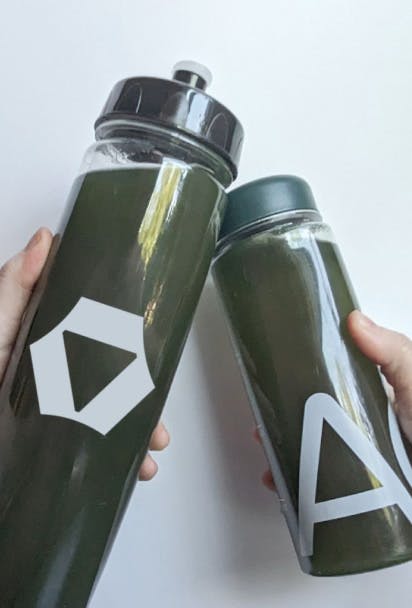E-commerce brands need to stay agile as U.S. trade policies continue to shift. While tariffs have been erratic for weeks with adjustments and temporary reprieves, many goods imported from major suppliers abroad are already more expensive, pushing prices up across several industries1.
In the automotive industry, for example, Ford Motor has raised prices on several models by up to $2,000 due to tariffs on vehicles manufactured in Mexico2. Apparel brands that rely heavily on Chinese imports are also facing higher costs on textiles and finished products, leading to thinner inventory margins3. Tariffs were also projected to drive the prices of consumer electronics up by 30-60%4. The uncertainty surrounding tariffs and the drastic increase in the prices of goods have also caused a dip in consumer confidence and sentiment, causing many shoppers to pull back on discretionary spending5.
However, with the 90-day pause following a trade agreement between the U.S.and China that took effect on May 14, reciprocal duties have been slashed from 125% down to 10%.6 While not a full resolution, the reprieve offers brands a much-needed break from spiraling costs and allows for more strategic planning ahead of potential long-term tariff restructuring.
For major importers like Temu and Shein, the tariff pause creates a temporary window of opportunity to restock U.S.-based warehouses by ramping up shipments from China. Amazon, whose third-party sellers often rely on Chinese manufacturers, are also expected to accelerate bulk shipments during the 90-day window to get ahead of future tariff reinstatements.7 But in response to renewed demand for ocean freight capacity, shipping costs are rising sharply. Asia-U.S. West Coast prices have jumped by 72% to $4,765 per forty-foot equivalent unit (FEU) in the past week, with East Coast rates up 44% to $5,721 per FEU.8 With brands rushing to capitalize on the pause, competition for ocean space is heating up, especially among those prioritizing full-container load (FCL) shipments to maximize volume at current rates. These shifts are shaping how shippers respond to the temporary tariff reprieve.
Some retailers and direct-to-consumer (DTC) brands are continuing to use the trade war as a marketing lever by offering tariff-inspired sales to encourage shoppers to buy now before tariff rates rise again or new measures are implemented9. Even with the reprieve, the threat of reinstated tariffs looms large.
Tariff driven sales continue to offer a practical way to generate additional capital and improve cash flow. By selling through inventory already on hand or en route that was purchased during this 90-day pause, brands can capitalize on strong demand while improving their open-to-buy budgets. For instance, a brand importing products at $10/unit now may have to pay $12.50/unit when tariffs are reinstated. Selling 5,000 units at the original cost could yield $12,500 more in margin to reinvest or buffer against the future squeeze.
With that in mind, e-commerce brands are experimenting with a range of tariff sales tactics to drive urgency and maximize results while the window of opportunity remains open.
Common Tariff Sales Tactics and Their Tradeoffs
Successful sales campaigns can significantly boost conversions by 5-10%10. So, it could be easily assumed that tariff sales are always good for your brand. However, every campaign comes with its own set of trade-offs.
Flash Sales & Limited-Time Offers
Flash sales are time-sensitive promotions, usually lasting 24 to 72 hours, that offer steep discounts on selected products or categories. These campaigns are usually promoted through countdown timers, email or text alerts, or social media blasts to drive immediate action and generate quick spikes in traffic and conversions.
While effective at creating urgency, this tactic can be risky if inventory becomes cost-prohibitive or difficult to replenish after the campaign. Although the May 14 agreement has temporarily reduced reciprocal duties to 10% for a 90-day window, many brands are still operating cautiously, unsure of what comes next. A brand that sells out during a flash sale and fails to restock before the pause expires may find itself dealing with much higher landed costs once duties return.
To avoid this, a strong fulfillment infrastructure is critical. Systems that offer real-time, accurate visibility into stock levels across platforms and warehouses not only ensure a smooth consumer experience during the sale but also help brands better forecast sell-through rates and manage inventory allocation so they don’t overcommit on volume they can't replace.
Holiday Sales
Holiday sales are planned promotions tied to widely recognized holidays or seasonal events, typically lasting several days to a week or more. Unlike flash sales, which are short and highly time-sensitive bursts designed to create immediate urgency, holiday sales offer a longer window for customers to shop and provide organic reasons to make purchases.
The Memorial Day sales this year were less about the hype and more about consumers racing against the clock on rising costs.11 We see the same trend for Father’s Day sales with consumers planning to spend $199.38 on average per person, or nearly $10 more than last year’s $189.81 average.12 To capitalize on this projected increase of consumer spending, brands must ensure they can efficiently fulfill each order and guarantee delivery by or before June 15. Brands that invest in scalable fulfillment networks are better positioned to maintain service levels, even amid last-minute order spikes.
Bundle Deals
These deals can take the form of kits, or more flexible offers like “Buy One, Get One Free” or “Buy X, Get Y at 50% Off.” Essentially, bundles can boost sales by incentivizing consumers to purchase more than they otherwise would.
This strategy helps brands increase average order value (AOV) and move more units per sale, which is especially useful when clearing out slower-moving SKUs alongside popular items. Moreover, tariffed products can be bundled with other non-tariffed products to mask slight price increases caused by preemptive tariff pricing.
However, if kitting isn't already built into a brand’s fulfillment workflow, it can quickly introduce operational complexity. Assembling bundles manually during high-volume periods can slow down order processing and lead to delays, errors, and customer dissatisfaction, negating the sales lift that bundles are meant to provide. To execute bundled offers efficiently, fulfillment systems must support kitting at scale.
Tiered Discounts Based on Cart Value
This strategy uses escalating incentives to encourage customers to spend more. For example, a brand might offer 10% off orders over $50, and 20% off orders over $100. This format nudges online shoppers to increase their cart size to reach the next discount threshold. For brands, this can be a way to protect margins by linking deeper discounts to higher order values while also encouraging bulk buying before higher tariffs return.
That said, tiered offers require careful calibration. Brands need clear visibility into SKU-level costs, inventory availability, and shipping constraints to build tiers that make financial and operational sense. Fulfillment systems must be able to support variable order sizes efficiently and ensure that larger, discounted orders can be picked, packed, and shipped without delay.
Adjusting Free Shipping Thresholds
Free shipping is a pricing-neutral way to encourage larger cart sizes without changing the price of individual items. In this case, instead of offering free shipping at a threshold of $75, brands may temporarily raise it to $85 or $100. This pushes customers to add more to their carts to avoid paying shipping fees13, which can be especially motivating when paired with messaging about potential cost increases post-reprieve.
The success of this strategy depends heavily on setting the new threshold just above typical order values and cart sizes, and making the benefit feel achievable.
However, larger orders often require different packaging, added weight handling, and more complex pick-and-pack processes. Your fulfillment system must be able to optimize for cost-efficiency and speed across varying order sizes and dynamically apply the correct free shipping thresholds.
Limited-Time Messaging Without Discounting
Instead of using special offers and promotions, this strategy focuses solely on urgency-driven messaging such as “Prices Going Up Soon” or “Buy Before Tariffs Return”. This leverages the inevitability of tariff-related cost increases to prompt faster decision-making and push hesitant shoppers toward conversion. A customer who has been lingering with a product in their cart for weeks may finally complete their purchase after seeing a clear warning that prices are about to go up after the pause, or inventory may run out.
While conversion rates may be lower without a financial incentive14, margins are preserved by avoiding discounts. And to enhance the perceived value of the offering, it’s often paired with a “Buy Now, Ship Now” promise. Although less effective at attracting price-sensitive or first-time buyers, the promise of quick delivery can help offset that drawback15, provided your fulfillment operations can reliably deliver on it.
Holding Inventory
Some brands, particularly those without expiration-sensitive products, are choosing to hold significant inventory in the U.S. or Canada to take advantage of lower landed costs while the reprieve lasts without adjusting prices or running promotions.
Their strategy is not “to do nothing” but rather to maintain current pricing, preserve margins, and sell through existing stock at a steady pace. This approach relies on the idea that competitors who run pre-tariff sales will burn through their inventory and then face higher costs to restock post-reprieve. Meanwhile, brands that held onto their pre-tariff inventory can continue selling at original prices, effectively undercutting the market without changing their pricing schemes.
The onset of this strategy is reflected in recent economic data. According to the Bureau of Economic Analysis, U.S. gross domestic product (GDP) for Q1 2025 fell at a 0.3% annualized pace, the first quarterly contraction since Q1 202216. A major contributor to the decline was a surge in imports17, as many businesses accelerated shipments to the U.S. to get ahead of more tariff hikes. While this move helped brands avoid higher landed costs, it introduced a new set of challenges tied to that surplus inventory: storage, handling, insurance, obsolescence, and now, additional costs from the ongoing fight for ocean space.
Without a solid inventory and fulfillment strategy, the savings gained from beating the tariff deadlines can quickly erode under operational inefficiencies. Brands need a detailed plan for where the additional inventory will be stored in relation to existing stock, and how quickly it can be moved once orders begin to surge.
Making Sales Campaigns Strategic Through Fulfillment
Ultimately, successful sales campaigns require a logistics operation that scales with demand. Every tactic outlined above depends on fast, flexible, and accurate fulfillment to avoid delays, errors, and poor consumer experiences. Stord’s integrated fulfillment platform and network are purpose-built to meet these challenges head-on.
By integrating warehouses, fulfillment centers, sales channels, and internal systems, Stord keeps inventory data synchronized and accurate across platforms. This real-time visibility enables dynamic merchandising and eliminates overselling risks that often come with high-volume campaigns. For bundle deals, Stord enables both pre-kitting and on-demand assembly, so brands can run complex promotions without sacrificing order speed or accuracy. And with fulfillment centers strategically positioned near major customer hubs, last-mile delivery times and shipping costs are optimized, even as AOV grows.
The temporary pause in escalating trade tensions has provided brands with a rare window to prepare. Tariffs may be lower for now, but they are not likely to go away. Brands that double down on flexibility and agility across their logistics stack will be better equipped to weather what comes next.
Tariff Sales Are Good, If Your Fulfillment Can Keep Up
Tariffs create unavoidable pressure on cost structures, margins, and consumer behavior. But for brands that partner with the right commerce enablement and fulfillment provider, they present a massive window of opportunity. Tariff inspired sales, when executed strategically, can drive demand, improve cash flow, and maximize the value of pre-tariff inventory.
Integrated systems, flexible fulfillment workflows, and real-time visibility give brands the speed and control to launch smarter campaigns, adapt faster, and maintain customer trust in an environment where economic and policy shocks are the new normal.









